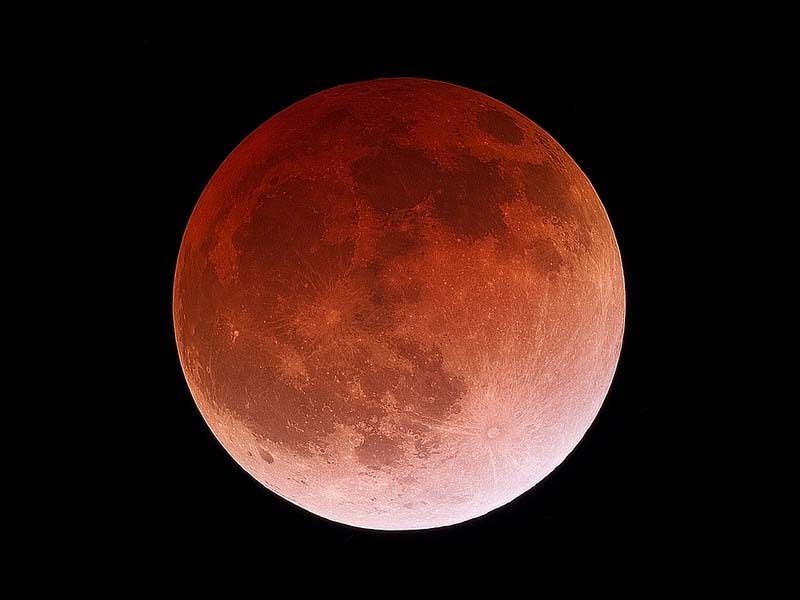
For the first time in 33 years, the world will witness a super moon in combination with a lunar eclipse, a rare celestial occurrence that requires no special equipment to observe.
In Qatar, the eclipse begins early Monday morning (around 3am), and will last around four hours.
According to Jassim Lari at the Qatar Astronomy Club, residents who hope to catch the action don’t need to leave the capital, but should perhaps stay out of the West Bay/Dafna area.
Speaking to Doha News, he said:
“When the eclipse starts the moon will be approximately 15 degrees above the horizon, which means a person should be a way from tall buildings.”
Two in one
“Super moon” is the term given to the moon when it is full and at its closest point in its orbit around the Earth. These are not uncommon, and occur usually about once a year.
But it is far more rare for one of these to coincide with a total lunar eclipse.
After the moon rises tonight, the Earth will eventually line up directly between the sun and moon. In the US, where NASA is based, this will happen tonight:
The eclipse will not cause the moon to go completely dark, but instead give off a reddish hue. This is because the moon does not make its own light, NASA explains:
(The moon) reflects light it receives from the sun. During a lunar eclipse, the moon appears less and less bright as sunlight is blocked by the Earth’s shadow. As totality approaches, sunlight reaches the moon indirectly and is refracted around the “edges” of Earth, through Earth’s atmosphere.
Because of this, almost all colors except red are “filtered” out, and the eclipsed moon appears reddish or dark brown. This filtering is caused by particulates in our atmosphere; when there have been a lot of fires and/or volcanic eruptions, lunar eclipses will appear darker and redder. This eerie — but harmless — effect has earned the phenomenon the nickname ‘blood moon.’ ”
For residents who wake up early to witness the super moon eclipse, no special equipment is necessary. Unlike during a solar eclipse, which should not be viewed with the naked eye, lunar eclipses can be openly stared at.
Those who don’t make it outside can check out a live feed from NASA here.
The next super moon eclipse will take place in 2033.
Thoughts?







